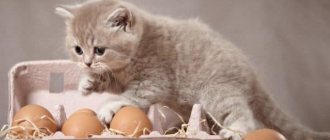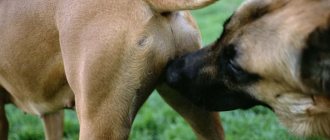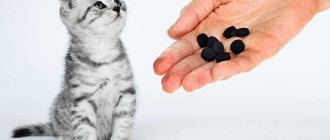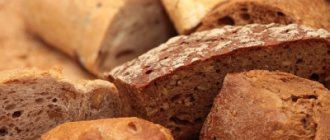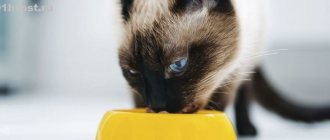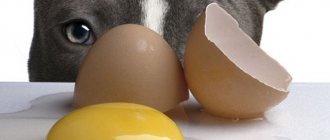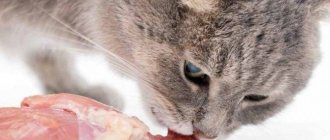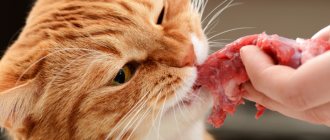Every owner should know how to replace cat milk
Sometimes situations arise when a cat, for some reason, is unable or refuses to feed kittens.
Either the animal dies after childbirth or even during its process. The first meal of the day for kittens is vital because, together with their mother’s milk (which at first faintly resembles milk and is called colostrum), they receive a portion of antibodies to deadly viruses.
Thus, within 24 hours, babies receive lasting immunity. It is important to understand that colostrum is unique in composition and cannot be replaced artificially. Cat milk replacers are intended to be an alternative to milk in the classical sense, which the cat lactates with after colostrum.
Maternal colostrum has unique immunomodulatory properties
Why cow's milk is undesirable
Sometimes owners still feed small kittens with milk obtained from a cow. Why this product should not be given to babies:
- Forcing your kitten to drink this product may cause diarrhea or an allergic reaction.
- Milk is quite high in calories and is a heavy food for babies.
- It is possible that some foreign substances may be added to this product - antibiotics, nutritional supplements and others.
- Product obtained from a pregnant cow may contain estrogen that is harmful to newborn kittens.
- Pasteurization of milk adversely affects its calcium content. You cannot force a kitten to lap up pasteurized milk, as the animal’s digestive process may be disrupted.
- Cows eat plant feed that is treated with pesticides. These same compounds can also end up in products obtained from cows.
- There is no guarantee that a product purchased in a store will not contain various infections that can harm the baby’s health.
INTERESTING TO FIND OUT: What to feed kittens if the cat does not have milk
Cat's milk and its features
When a cat's colostrum turns into full-fledged milk, it can hardly be distinguished from any other milk, including the familiar cow's milk. Basically, the composition of cat milk is approximately the same as the composition of regular milk, and differs only in the percentage of components:
- About seventy percent of a cat's milk is water. As for the fat content, on average it does not exceed 11%, which is 7% lower than the fat content of human, goat and cow milk.
- The protein content of milk is also about 11%, which is very different from the 2% in women's milk, and the 4% in cow's and goat's milk.
- The amount of lactose is slightly higher than 3%, which is less than in women's (6%), goat and cow's milk (5%).
The composition of cat's milk differs from any other in the proportions of proteins, fats and lactose. It follows that the protein ratio and fat content of cat milk is significantly higher than in any other milk, so it is not possible to replace it with natural alternatives.
Nutritional features of kittens
To answer the question whether a kitten can be given milk, you need to understand how its digestion works. From a scientific point of view, cats fall into the following categories:
- Class: Mammals;
- Squad: Predatory;
- Family: Felines.
Nature has provided that the best nutrition for a newborn kitten is its mother's milk. A mother cat, like a true mammal, feeds her babies with milk for up to 3 months. During this time, a special enzyme, lactase, is produced in the kittens’ small intestine, which allows them to digest lactose (milk sugar).
When the kitten is 1 month old, the mother begins to gradually introduce him to solid food. They try meat, but breastfeeding does not stop. We must not forget: cats are predators. The kitten's body is growing and preparing for adulthood. Instead of lactase, proteases begin to be produced - enzymes responsible for the breakdown of proteins.
By 3 months, the cat has finished breastfeeding the kitten, and it can be given meat food. Lactase is no longer produced because there is no need for milk.
Note: in very rare cases, the gastrointestinal tract of adult animals may retain the ability to produce small amounts of lactase and digest milk.
Cat milk replacer for kittens
Since there is no organic alternative for cat milk, some cat food manufacturers have created a line of artificial cat milk substitutes. They include components necessary for the kitten’s body, such as: minerals, vitamins, trace elements, the amino acid Taurine, omega-6 and omega-3 fatty acids.
There are several manufacturers of cat milk substitutes; they differ in quality, configuration and composition. The price of products from different manufacturers also differs. Here are the most popular ones:
- Royal Canin, which also produces food
- Beaphar
- Gimpet
- Canina
- Nutri-Vet
- Dolfos
- Clauder's
- Gimborn
- Hartz
- Trixie
- Vo-Toys
- Camon
Don't let your cat's diet lack essential elements
The lack of certain “ingredients”, for example, EPA, DHA, arachidonic, linoleic and alpha-linoleic acids (which are found in Omega-6 and Omega-3 fatty acids) can lead to various serious developmental pathologies in the cat. Among the products of cat milk substitutes, only Royal Canin, Beafar and Gimpet mixtures contain these components, and in the required percentage.
Some owners, when they find out how much an artificial cat milk substitute from a popular manufacturer costs, wonder if it is possible to prepare the mixture at home using ordinary products as ingredients?
If necessary, milk replacer can be prepared at home
Of course, veterinarians do not advise doing this due to the need to include the maximum necessary microelements in the kitten’s diet, but some recipe options still exist:
- The first recipe consists of 20% condensed milk without sugar and water (5:1 proportions), which must be mixed with bone meal in a ratio of one teaspoon per liter of milk. Using this recipe, you can prepare a substitute for newborn kittens;
- The second recipe is based on cow's milk, which requires 0.5 liters. You need to mix one chicken egg yolk and four tablespoons of sugar in milk. Instead of cow's milk, you can use goat's milk or a powdered milk product. Also, 0.3 ml of vitamin supplements in drops (Tetravit or Trivit) should be added to the mixture;
- The third recipe is based on the “Malyutka” infant formula, which should be diluted with water in the proportion specified in the product instructions;
- The fourth recipe is most suitable for newborns, weakened or sick kittens and consists of 100 ml of milk, 20 ml of 5% glucose, one chicken egg yolk, one spoon of vegetable oil, 0.3 ml of vitamin supplements in drops (Trivit or Tetravit), as well as baby Nutrilon mixture.
Such mixtures should be thoroughly mixed until smooth and given to the pet using a bottle with a nipple. If there is no pacifier available, then you can limit yourself to a pipette or syringe, but in this case you need to feed the animal very carefully so that it does not choke. The prepared mixture should be heated before feeding to the animal’s body temperature, that is, to 38-39 degrees Celsius. If the kitten does not eat everything at once, the substitute can be kept in a closed container in the refrigerator, but no more than 24 hours.
What quantity is acceptable? Features of one month of age
As already mentioned, kittens are often fed with special ready-made formulas, especially when they are left without a cat.
They do this until almost 4 months. The product stock is prepared immediately for the day. Keep it in the refrigerator to maintain freshness and beneficial properties. When self-feeding, the mixture is given after 2 - 3 hours. The daily norm at the age of 1 month is 30 ml per 100 g of body weight. Before feeding, milk is heated to 38 degrees.
But you can make a mixture for a kitten yourself according to this recipe: take 50 g of cow's milk, milk powder, yeast, egg, cream. This composition contains all the ingredients that a pet’s growing body requires.
Artificial feeding of a kitten should follow the same rules as with a cat:
- Choose a warm, cozy and quiet feeding area.
- Place the kitten on its tummy.
- You need to purchase special nipples, which are available in pet stores.
- Hold the pacifier at a 45 degree angle.
- It is not recommended to force your baby to eat more than he wants.
- In the first couple of weeks, feed your pet every 2 hours.
- You can try solid food only after 1 month.
Attention!
Another important nuance is that for the first time after birth, the kitten cannot go to the toilet on its own. If there is no cat, then he will need help - stroking his tummy after feeding - if this is not done, then the baby will become intoxicated and he may die.
Over time, the kitten grows and learns to do everything on its own thanks to unconditioned reflexes.
What breed is this product completely contraindicated for? Features of Scottish and British
If we talk about which breeds milk is completely contraindicated, then these are Scottish kittens.
Some believe that the cause is the ability of the ears to stand up - this is a real myth.
In fact, starting from 3 months, pets of this breed more often than others stop digesting lactose normally and, like some people, they develop complete intolerance. The same applies to the British.
Not all cats feel a negative reaction to milk; some may greedily pounce on the product and love it very much, despite the ban and subsequent poor health.
As a result, diarrhea, increased gas formation and indigestion develop. For this reason, after 3 months, kittens are no longer given any milk.
Despite the ban on milk, it is beneficial for cats to consume fermented milk products - they are rich in calcium and contribute to the proper intestinal microflora of the animal. You should not choose too fatty fermented milk products; it is recommended to give preference to kefir, low-fat fermented baked milk, natural yogurt and yogurt.
For information:
sour cream is not the best choice. Fermented milk food is served separately and should not be mixed with other kitten food.
How to use cat milk replacer?
When buying a cat milk substitute, you need to understand exactly how to use such mixtures at home so as not to harm the animal and preserve the beneficial properties of the components. Since milk replacer mixtures are usually so-called “powdered” milk, they must be prepared correctly.
Mixtures should be prepared according to the manufacturer's instructions
Instructions for using substitutes are approximately the same for all manufacturers. Owners need to know several features of this process:
- Powdered milk must be diluted with cooled boiled water in the percentage indicated on the packaging of one or another manufacturer.
- All utensils used should be as sterile as possible, since bacteria should not get on the utensils or in the substitute;
- Hands should be washed clean, especially if the kittens have not received cat colostrum at all;
- You should not buy mixtures in large packages, since during long-term storage various pathogenic bacteria can get into the cat's milk replacer. This does not apply to Royal Canin cat milk replacers, the powder portions of which are packaged in separate bags for long-term and sterile storage;
- The prepared mixture should also not be stored under any circumstances - it is best to immediately throw out the leftovers left uneaten by the kitten.
- If the packages of milk replacers from the manufacturers Katzenmilch, Royal Canin BabyMilk, Hartz include special bottles and nipples, then the Beafar and Gimpet packages do not have them. Accordingly, you need to stock up on a feeding kit with these mixtures in advance.
- Under no circumstances should kittens be given water from a syringe or spoon - this is extremely inconvenient and also dangerous for the pet, because it can die if it chokes or cannot cope with rapidly developing pneumonia. An animal can also die if some of the food gets into its lungs.
Compatible with cat food
At what age can kittens be wormed for the first time?
Can cats fed on food be given milk? Specialized industrial cat food, both dry and wet, is completely balanced and does not require additional feeding. They are combined only with clean water.
If a cat eats dry industrial food, he doesn’t need anything else except water.
Note! Attempts to diversify a purr's dry diet can harm its health: it is possible to develop liver disease and deposits in the kidneys and bladder. Therefore, if your pet eats dry food, milk is contraindicated.
Dosage when feeding kittens with milk replacers
The finished mixture must be measured correctly; for this, for example, manufacturers of some mixtures include in the packaging a special measuring spoon and three nipples of different sizes for the convenience of feeding the animal as it grows.
Savannah kittens are among the tallest
When and in what dosage is it best to feed a kitten?
First of all, it all depends on his age and breed. Kittens of large breeds, say, Maine Coon, Norwegian Forest Cat, Kurilian Bobtail, Pixie Bob, Ragdoll, Turkish Van, are much larger physically than their counterparts. Accordingly, their need for nutrients for normal development is higher.
Packages of milk substitutes from different manufacturers must contain an approximate calculation of the dosage. The amount of mixture required looks like this:
- From one to four days - 30-32 ml;
- From five to fourteen days - 37-39 ml;
- From fifteen to twenty-five days - 44-47 ml;
- From twenty-six to thirty-six days 52-55 ml.
You need to monitor your pet's weight gain every day.
To calculate the exact dosage of the diet your kitten needs, you need to monitor your pet's weight gain and health status every day. You can learn more about this based on the table:
Cat milk replacer dosage table
Although the table provides complete information about the dosage, it is necessary to determine as accurately as possible whether the kitten is full or not. This is necessary because both overfeeding and underfeeding are dangerous for his body. If the cub is underfed, it falls into a state of lethargy and restlessness. If, on the contrary, it is overfed, the animal’s stool changes. Stool is the most obvious indicator of a cat's satiety. Light overfeeding leads to loose, yellowish stools.
With average overfeeding, the stool becomes greenish, and with regular overfeeding, the stool becomes gray.
Is it possible to give milk to a fold-eared kitten?
A real “urban legend” associated with milk concerns British and Scottish fold kittens. It goes like this: if you feed lop-eared kittens with cow's milk, their ears may “stand up.” The main argument in favor of this theory is that kittens will receive a lot of calcium from milk, which will strengthen the cartilage and straighten their ears.
This myth is used by unscrupulous breeders. In fact, Scottish and British kittens' ears may rise as they grow. This is due to a defect in the breed, or it can be considered a feature of a particular animal. Fallow cats must receive calcium and other minerals.
The answer to the question whether it is possible to give milk to a fold-eared kitten will be the same as for other breeds - cat milk is ideal, but cow, goat and sheep milk is not recommended.
For which breeds - which substitute?
Cat milk replacers are universal not only for all cat breeds, but also for most young pets in general. For example, many owners give a mixture of the same manufacturer to both kittens, puppies, and ferrets. The main difference when feeding is the breed for which the replacement is needed. The larger the kitten, the more nutrients it needs. Of course, the dose must be increased very carefully, because the pet’s stomach is very small in the first weeks. You should also monitor the color of the feces and whether the kitten falls asleep after feeding.
Source
Making a feeding schedule
Have you decided to feed your kittens baby food? Choose formula milk for the youngest children. How to properly organize artificial feeding of tailed babies? Newborn kittens under three weeks of age should be fed every 2 hours. For feeding, a small nipple, pipette or syringe is used. When babies are three weeks old, you can switch to feedings every three hours. As soon as the kittens celebrate their one-month birthday, complementary foods can be introduced. You need to start with wet food. Choose a product whose packaging contains instructions about the permissible age of the animal. Is it possible to give a one-month-old kitten milk from a human table (cow)? This is acceptable, but the product should not be the main one in the diet. The standard feeding regimen for kittens over 1 month old, provided that they live without their mother: 2 times a day - cow's milk and 2 times a day - wet food. Two-month-old tailed babies can be given dry food. Cow's milk should be gradually eliminated from the diet.
